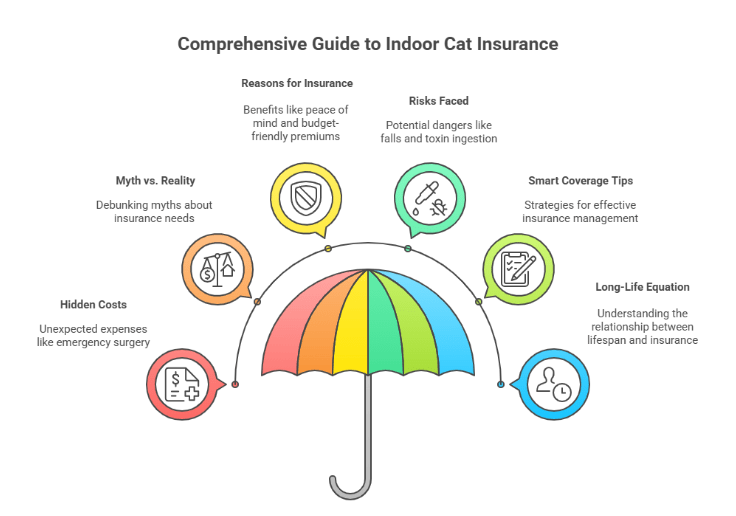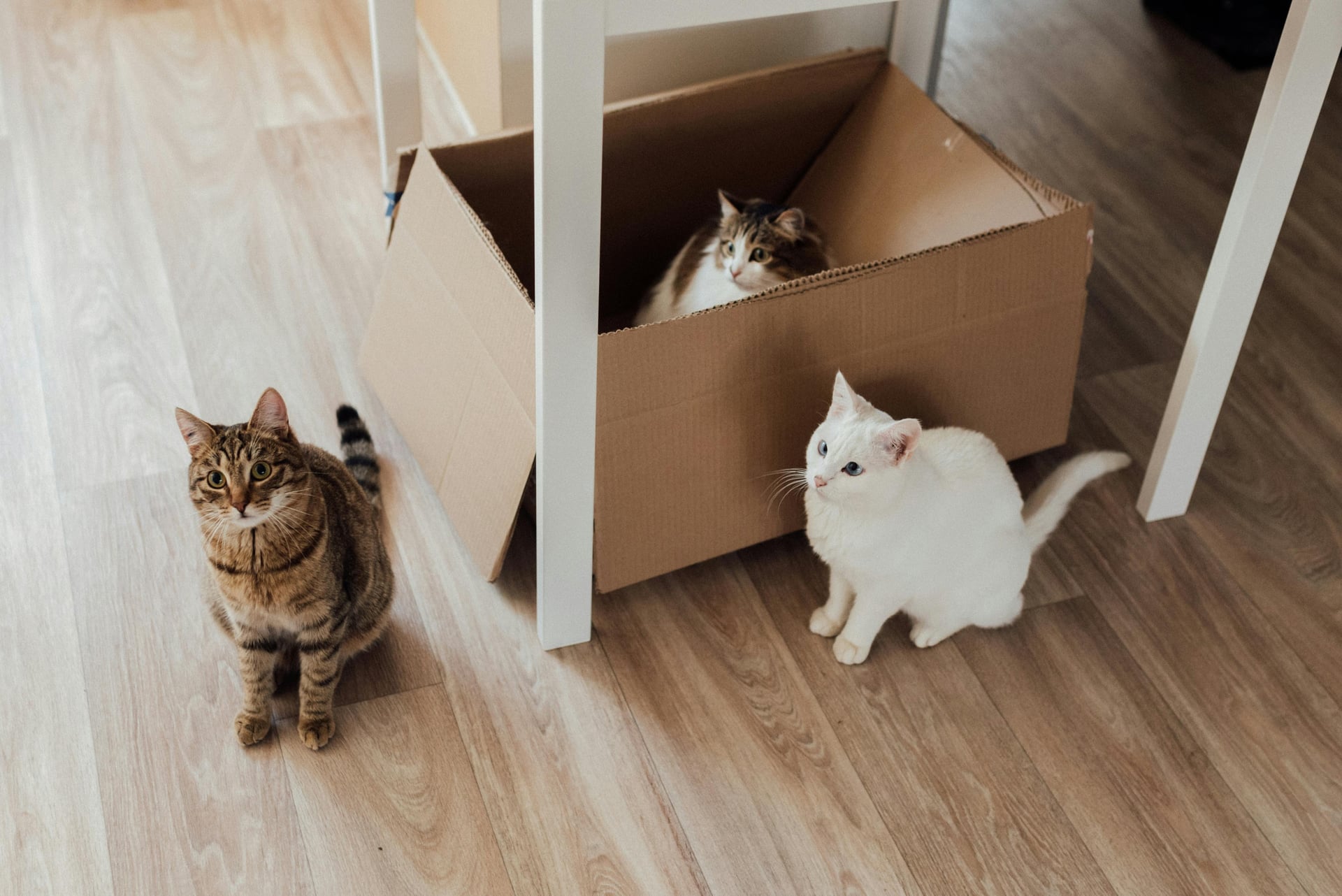You love your cat. You plan. You budget. You keep them safe indoors. Still, one scary moment can change everything. At PetCoverage.ai, we help cat parents avoid the “I can’t afford it” panic at the front desk. Our free policy review tool finds coverage gaps, compares real costs, and shows where a plan may fail you when it counts. We also help new shoppers pick smart, not just cheap. If you’ve asked yourself “is pet insurance worth it for indoor cat”, this guide was written for you.
The real question is: Is pet insurance worth it for indoor cats?
Short answer: yes, if you want options when life gets messy. Indoor cats face fewer car strikes or coyote bites, sure. But they face different risks that are common, urgent, and expensive.
Think about:
Urinary blockages in male cats that can turn deadly in hours. Treatment can run into the thousands.
Dental disease that sneaks up over years, but leads to extractions, x-rays, and anesthesia.
Falls from counters or cat trees causing fractures or soft-tissue injuries.
Chronic illnesses like kidney disease, diabetes, hyperthyroidism, and cancer—more likely as indoor cats live longer.
Industry data show that pet insurance use continues to rise because veterinary care costs are also increasing. That’s not fear; it’s planning. When you ask “is pet insurance worth it for indoor cat”, think less about how often you’ll file a claim and more about how big that one claim might be. One emergency can wipe out a year of savings. Insurance turns that “how will we pay?” moment into “we can say yes” to care.
Our take: if you want to protect your budget, protect your choices, and protect your peace of mind, it’s worth it, even for the home-bodiest of house panthers.

The “indoor risk” no one talks about: slow problems that become big bills
Indoor life lowers the risk of accidents, but it increases longevity, and with longer life comes the need for chronic care. That’s where costs stack up.
Common indoor-cat realities:
Urinary issues (especially male cats): ER catheterization, fluids, labs, rechecks. A single episode can be $1,500–$3,500+ depending on severity.
Dental disease: dental cleaning with x-rays and extractions often climbs into four figures.
Allergies and skin: long-term meds and diagnostics add up over time.
Kidney disease, diabetes, hyperthyroidism: ongoing bloodwork, meds, prescription diets, and occasional hospital stays.
When people ask “is pet insurance worth it” for an indoor cat, this is the math that matters. One “quiet” condition can turn into years of steady spend. Insurance helps you budget, choose better care, and feel calm about the future.
What would your plan actually pay for these? Run your policy through our free PetCoverage.ai review tool. We highlight exclusions, waiting periods, and “gotchas” in plain language.
How does pet insurance work (for indoor cats, in real life)?
Here’s the simple flow:
Pick a plan type
Accident-only (cheaper, limited)
Accident & illness (most useful)
Wellness add-ons (optional, for checkups/vaccines/dental cleanings)
Set your levers
Deductible (what you pay before reimbursement starts)
Reimbursement rate (often 70%–90%)
Annual limit (e.g., $5,000, $10,000, or unlimited)
Use any licensed vet (most plans are not network-based)
Pay the clinic, submit a claim, and get reimbursed. Some carriers offer direct pay to the vet for eligible bills.
Mind the waiting periods (accidents often days; illness often weeks; certain ortho/certain conditions longer).
Why this matters for indoor cats: you’re insuring against that one ER visit or a long stretch of chronic care. The right plan helps you say “yes” to an ultrasound today, or “yes” to the better med for fewer side effects. If you’ve wondered “how does pet insurance work”, that’s it in five lines: plan → lever choices → any vet → claim → reimbursement.
Want help choosing the right deductibles and limits for an indoor cat? Start a free review at PetCoverage.ai and we’ll calibrate for your cat’s age and risk.
Numbers you can feel: two real-world claim scenarios for indoor cats
Scenario A: Urinary blockage (male cat), total bill $2,800
Plan 1: $500 deductible / 80% reimbursement / $5,000 annual limit
You pay first $500 (deductible) + 20% of the rest ($460) = $960 total
Plan 2: $250 deductible / 90% reimbursement / $10,000 annual limit
You pay first $250 + 10% of the rest ($255) = $505 total
Scenario B: Dental disease with extractions, total bill $1,600
If wellness/dental add-on covers a portion of cleanings/x-rays, your out-of-pocket drops fast.
Without dental coverage, you’re paying against your main policy (if covered) or fully out-of-pocket (if excluded).
What these examples show: with one urgent event, a plan can pay for itself. If you’ve been asking “is pet insurance worth it for indoor cat”, this is why many families answer yes—one bad day can equal years of premiums.
Send us your quote or current policy. We’ll model your out-of-pocket across “good year vs bad year.” Free, fast, clear.
Warning: The indoor-cat gaps that surprise people
Please read this before you buy (or renew):
Exam fees: Some policies don’t reimburse the exam itself, even on ER visits. That adds up.
Dental specifics: Cleanings, x-rays, and extractions may need a dental or wellness add-on. Don’t assume.
Prescription food: Kidney or urinary diets? Often excluded unless your plan lists it.
Behavioral coverage: Only when diagnosed by a vet; basic training isn’t covered.
Pre-existing conditions: Anything noted before your policy starts is excluded.
Waiting periods: Illness coverage doesn’t start day one. Also check special waiting periods for certain conditions.
At PetCoverage.ai, we’ve seen too many cat parents learn these rules in the ER lobby. Don’t wait for the invoice to find the fine print. Upload your policy for a free gap check today.
Case study: The “indoor so safe” story that changed a mind
Nyx, a 1-year-old indoor maine coon cat, was blocked on a Saturday night. Her owner, Gian Paul, thought indoor life meant “low risk” and held off buying a plan. The ER estimate was $3,400 for catheterization, labs, fluids, pain meds, and a 24-hour stay. The clinic required a large upfront deposit.
After that scare, Nyx’s parent joined through our guidance: $250 deductible, 80% reimbursement, $10,000 annual limit, and added dental/wellness. Three months later, Nyx needed a second procedure and a follow-up ultrasound, totaling $2,200. The plan reimbursed about $1,560, and wellness covered part of his preventive care that year. The owner’s words to us: “I wish I hadn’t waited. I said yes faster because I knew help was coming.”
If you’ve been on the fence asking “is pet insurance worth it for indoor cat”, Nyx’s story is a quiet, everyday answer: indoor does not mean no risk. It means different risks, and often repeatable risks.
How to choose a plan that fits an indoor cat (simple checklist)
Pick Accident & Illness as your base. Accident-only misses the chronic stuff indoor cats actually face.
Add dental/wellness if your budget allows. Cats hide pain; dental x-rays and cleanings prevent big bills later.
Choose a deductible you can pay in one day. If $500 feels heavy at 2 a.m., go $250–$300 instead.
Aim for 80%–90% reimbursement. It can be the difference between “we need to wait” and “treat now.”
Set the annual limit to match one major ER event. $5,000 is a good floor; $10,000+ offers more cushion.
Check waiting periods and exam fee coverage. These two details cause the most surprises.
Review yearly. As cats age, risks change. Your plan should, too.
Not sure where to start? Use PetCoverage.ai’s free review tool. We’ll map your cat’s age, history, and your budget to the right settings, not just the cheapest price.
What indoor-cat policies usually cover (and what they don’t)
Often covered (with Accident & Illness):
ER visits, imaging (x-rays, ultrasound), lab work
Surgeries and hospital stays
Medications for covered conditions
Chronic issues like diabetes, hyperthyroidism, kidney disease, allergies
Some alternative therapies (if listed) like acupuncture or rehab
Often not covered (unless clearly included):
Pre-existing conditions
Routine wellness without a wellness add-on
Dental cleanings/extractions without dental coverage
Prescription food (unless your plan lists it)
Breeding, pregnancy, cosmetic procedures
If you’re still wondering “how does pet insurance work” or “is pet insurance worth it for indoor cat”, the key is alignment: get the coverage your cat is most likely to use.

Frequently Asked Questions (FAQs)
1. My indoor cat is healthy. Why buy now?
Because pre-existing conditions aren’t covered. Enrolling while healthy locks in coverage before problems start and often keeps premiums lower.
2. Will I have to change vets?
No. Most plans let you visit any licensed vet, including ER and specialists. That freedom matters when minutes count.
3. How fast do I get reimbursed?
It depends on the carrier and claim type. Many pay in a few days to a couple weeks; some offer direct pay to clinics for eligible bills.
4. What if I never use it?
Then you bought peace of mind and protected yourself from one big, bad day. Think of it like a seat belt you’re glad you wore.
5. Can I drop wellness and add it later?
Usually yes, but changes may reset waiting periods or timing. Ask your carrier, or let us check for you.
Key Takeaways
Pet insurance for indoor cats isn’t just about rare emergencies; it’s about planning for the unexpected in long, healthy lives. If there’s one thing to remember, it’s this: fewer risks don’t mean zero risks.
Secure Coverage for Longevity: Indoor cats live longer, which raises the chances of chronic conditions like diabetes, kidney disease, or dental issues. Choose a plan that accounts for long-term care.
Look Beyond Outdoor Dangers: Even without car accidents or fights, indoor cats can face hidden risks, like ingesting toxins, sudden illnesses, or age-related conditions. Review your policy carefully to see what’s included.
Protect Future Health at Lower Costs: Enroll your cat early before exclusions apply. Premiums are cheaper for healthy cats, and coverage locks in protection for their lifetime.
We’ve explored why insurance matters even for indoor cats, the misconceptions around “fewer risks,” and the strategies for choosing policies that really protect.
For ongoing tips, guides, and real-life stories on protecting your pet’s health, follow us on Facebook, Instagram, TikTok, and LinkedIn.






